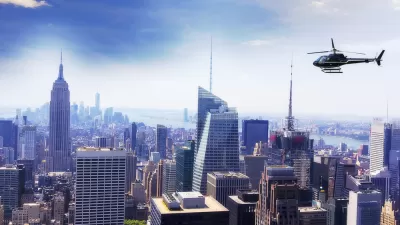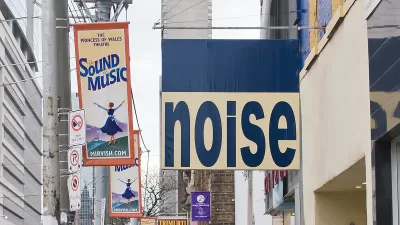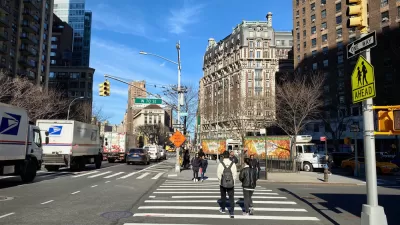The fact that New York is loud is unlikely to surprise anyone. But despite decades of noise abatement efforts, the contributors to noise pollution keep multiplying. As scientists recognize the multitude of negative health impacts, what can be done?
"Silence has become a luxury in New York that only a scant few can truly afford, and cultural, technological and economic changes in recent years have added to the din everyone else must endure, creating not just one culprit, but many," writes Cara Buckley. In an in-depth article, she examines the sources of the growing din (both inside and outside), steps that some are taking to lower the volume, and the health impacts of all that noise.
"Interviews with residents in affected areas, officials, soundproofing professionals and audio experts not only confirm the creep in round-the-clock outside noise, but suggest that its potential ill effects can rival those caused by deliberately manipulated, high-decibel assaults inside stores, clubs and restaurants. Some contend that the city, despite its efforts, has shown a distinct reluctance to crack down on certain offenders, like construction companies, especially in recent years."
“For every step forward in terms of technology, we’re taking a step back in terms of how we use that technology,” said Rick Neitzel, an assistant professor of environmental health sciences at the University of Michigan Risk Science Center. “That’s not to say society has gotten louder. But in terms of inescapability it is true. Our noise levels on average might be the same. But they’re spread so much throughout the day you really have no respite.”
FULL STORY: Behind City’s Painful Din, Culprits High and Low

Maui's Vacation Rental Debate Turns Ugly
Verbal attacks, misinformation campaigns and fistfights plague a high-stakes debate to convert thousands of vacation rentals into long-term housing.

Planetizen Federal Action Tracker
A weekly monitor of how Trump’s orders and actions are impacting planners and planning in America.

San Francisco Suspends Traffic Calming Amidst Record Deaths
Citing “a challenging fiscal landscape,” the city will cease the program on the heels of 42 traffic deaths, including 24 pedestrians.

Defunct Pittsburgh Power Plant to Become Residential Tower
A decommissioned steam heat plant will be redeveloped into almost 100 affordable housing units.

Trump Prompts Restructuring of Transportation Research Board in “Unprecedented Overreach”
The TRB has eliminated more than half of its committees including those focused on climate, equity, and cities.

Amtrak Rolls Out New Orleans to Alabama “Mardi Gras” Train
The new service will operate morning and evening departures between Mobile and New Orleans.
Urban Design for Planners 1: Software Tools
This six-course series explores essential urban design concepts using open source software and equips planners with the tools they need to participate fully in the urban design process.
Planning for Universal Design
Learn the tools for implementing Universal Design in planning regulations.
Heyer Gruel & Associates PA
JM Goldson LLC
Custer County Colorado
City of Camden Redevelopment Agency
City of Astoria
Transportation Research & Education Center (TREC) at Portland State University
Jefferson Parish Government
Camden Redevelopment Agency
City of Claremont





























